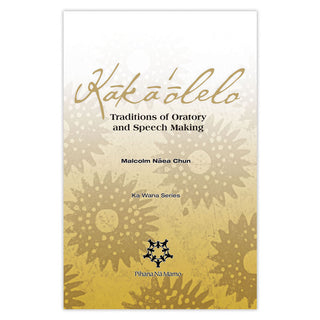In one of his last published papers, Te Rangi Hiroa (Sir Peter Buck), the only Polynesian director of the Bernice Pauahi Bishop Museum, asked what happened to Hawaiian oratory and speech making. Oratory is renowned throughout the Pacific, especially in Polynesia. But who were, and are, the great Hawaiian orators? What are the most memorable of the traditional speeches, and why are they remembered and recited today? Malcolm Nāea Chun takes up this Maori challenge, describing the historical roots of Hawaiian oratory, and its eventual decline. He adds to this his personal experience as a speech writer and as a speech maker to kings and queens, indigenous tribunals, conferences, and gatherings to recreate a formidable picture of Hawaiian oratory, finishing with a discussion of what can be done today to revive this forgotten art form.
_____
Written by Malcolm Nāea Chun
_____
paperback | 36 pages | 6" x 9" | B&W
In one of his last published papers, Te Rangi Hiroa (Sir Peter Buck), the only Polynesian director of the Bernice Pauahi Bishop Museum, asked what happened to Hawaiian oratory and speech making. Oratory is renowned throughout the Pacific, especially in Polynesia. But who were, and are, the great Hawaiian orators? What are the most memorable of the traditional speeches, and why are they remembered and recited today? Malcolm Nāea Chun takes up this Maori challenge, describing the historical roots of Hawaiian oratory, and its eventual decline. He adds to this his personal experience as a speech writer and as a speech maker to kings and queens, indigenous tribunals, conferences, and gatherings to recreate a formidable picture of Hawaiian oratory, finishing with a discussion of what can be done today to revive this forgotten art form.
_____
Written by Malcolm Nāea Chun
_____
paperback | 36 pages | 6" x 9" | B&W

